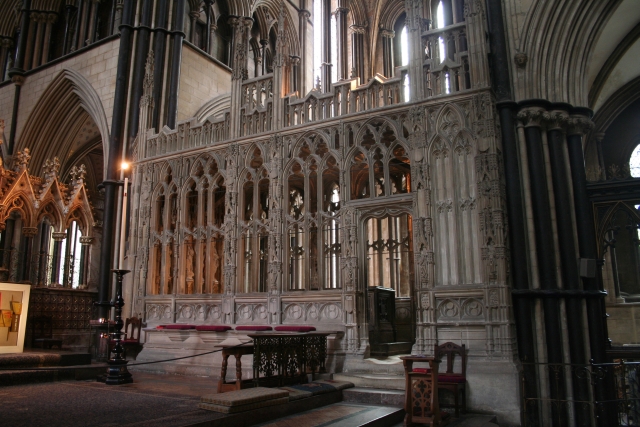
Arthur, Prince of Wales, was the elder brother of Henry, who
became King Henry VIII. Arthur was born in September 1486, just over a year
after his father, Henry Tudor, had become King Henry VII by virtue of his
victory over King Richard III at the Battle of Bosworth.
Arthur was therefore seen as the great hope for a new Tudor
dynasty, and a suitably prestigious marriage was arranged for the future king.
This was to Catherine, the daughter of Isabella of Castile and Ferdinand of
Aragon. The betrothal took place when Arthur and Catherine, who was a few
months older than Arthur, were still young children, and the marriage took
place by proxy in 1499, when they were still too young to be husband and wife
in anything but name.
The couple met for the first time in November 1501, shortly
before their official marriage in St Paul’s Cathedral. They were sent to Ludlow
Castle, on the border between England and Wales, to begin their life as Prince
and Princess of Wales, but disaster was to strike only a few months later.
A mystery illness – probably a viral infection – swept
across the region early in 1502. Both Arthur and Catherine fell victim to it
and were confined to bed in the hope of recovery. Catherine did indeed recover,
but Arthur did not.
This event was to have massive repercussions in later years,
because Catherine was then passed on to Henry’s new heir, then aged 11. They
married seven years later, and it was her failure to produce a male heir that
led to the drama of the English Reformation.
Arthur’s death, at the age of 15, was clearly a great
tragedy that called for a suitable resting place to be found for his remains.
This was Worcester Cathedral, not far from Ludlow, and already a royal resting
place due to the tomb of King John that had been there since 1216.
Arthur’s tomb was placed not far from that of King John, but
in a separate chantry chapel to one side of the altar steps. The tomb, which is
not topped by an effigy of Prince Arthur, occupies most of the space, but it is
possible to walk all round the tomb to pay one’s respects. The stonework of the
chapel was intricately carved, but some of the figures of saints still bear the
marks of the axes of Cromwell’s soldiers who did their best to eliminate such
signs of Catholic idolatry in the 17th century.
Entry to the chapel is via two stone steps, which have been
worn down by the feet of many thousands of visitors during the 500 and more
years since they were put in place. It is known that one such visitor was Queen
Elizabeth I who came to Worcester to pay homage to her royal predecessor King
John and her late uncle Prince Arthur, who had died more than 30 years before
she was born.
Today’s visitors can therefore know that their feet are
treading exactly where those of Queen Elizabeth trod nearly 500 years
previously. To be accurate, though, today’s footprints are probably a couple of
inches lower than those of Good Queen Bess!
© John Welford
No comments:
Post a Comment